As I look at the painting before me, I’m transfixed by one of the most intense gazes I’ve ever seen. It seems to peer into my soul, weighing the worth of what it finds there. I creep towards the glass, noting the golden rays that radiate from the head – so precise but with an ineffable inner glow. Such is the image’s lure that the cathedral around me disappears until footsteps shatter my reverie. The strangest thing: I’m looking into the face of a lamb.
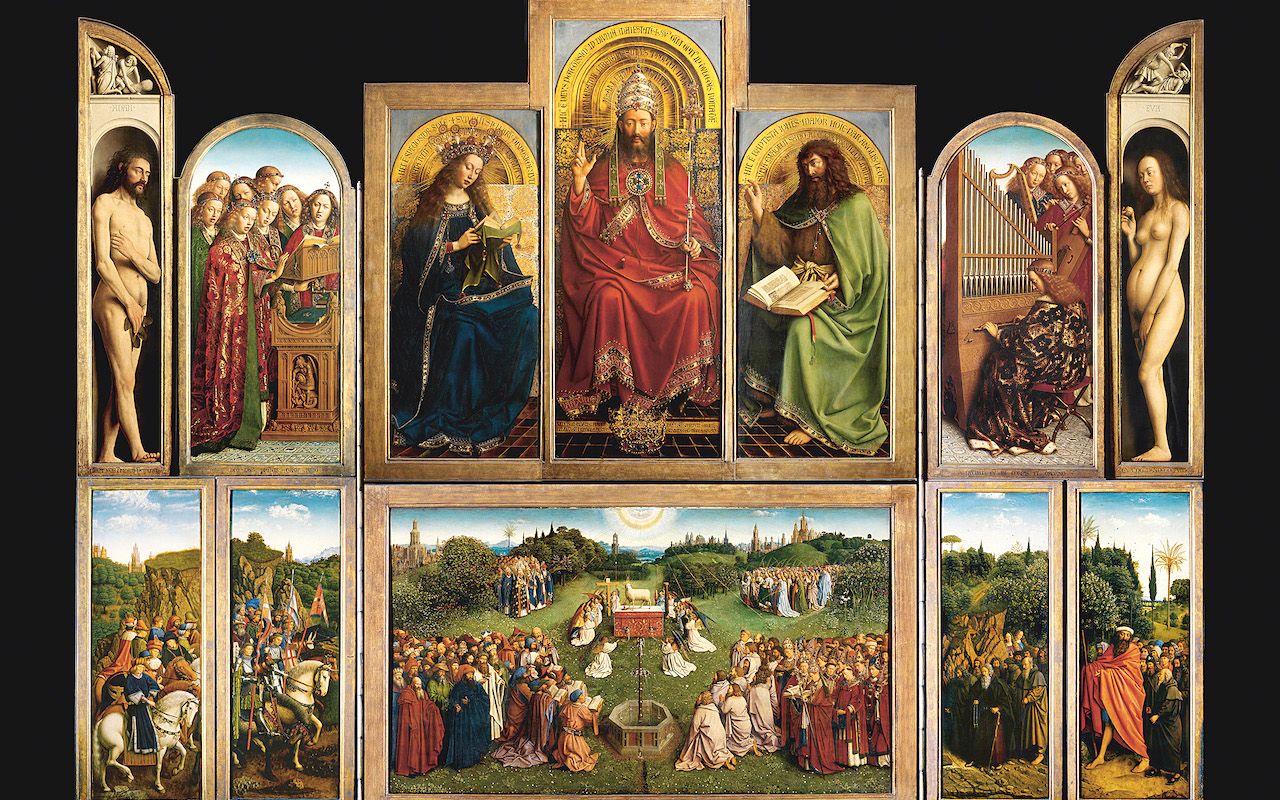
Unveiled in 1432, Jan van Eyck’s The Adoration of the Mystic Lamb or the Ghent Altarpiece is one of the world’s most influential paintings – and its most coveted. An A to Z of Catholic mysticism (the lamb bleeds into a chalice, representing Christ’s sacrifice), the 12-panel polyptych has been hidden, dismembered and nearly destroyed by fire over the centuries. Hollywood film The Monuments Men depicts its looting by the Nazis and even a master fabulist like Dan Brown couldn’t come up with a backstory as improbable as that of the painting’s Just Judges panel, which was stolen in 1934 and has never been recovered.
I’m paying a pilgrimage to the mesmerising work – housed at St Bavo’s Cathedral in Ghent – following a spectacular $2.4 million restoration of the altarpiece that was completed in December 2019. This prompted a several events in the region celebrating the master medieval painter, beginning with the “Van Eyck: An Optical Revolution”, the biggest ever display of his works that ran at the Museum of Fine Arts Ghent (MSK) until 30 April. The sprawling exhibition featured over half of the estimated 20 van Eyck pictures that are still in existence, including the outer panels of the Ghent Altarpiece, alongside 100 works by the painter’s Italian contemporaries such as Fra Angelico and Masaccio.
The 59-year-old is a commanding presence in his spectacles, suit and snowy beard. “He perfected oil painting and drew on a deep knowledge of geometry to observe reality. Painting reality as it was gave him a spiritual sight; an insight into painting god. That was his optical revolution.”
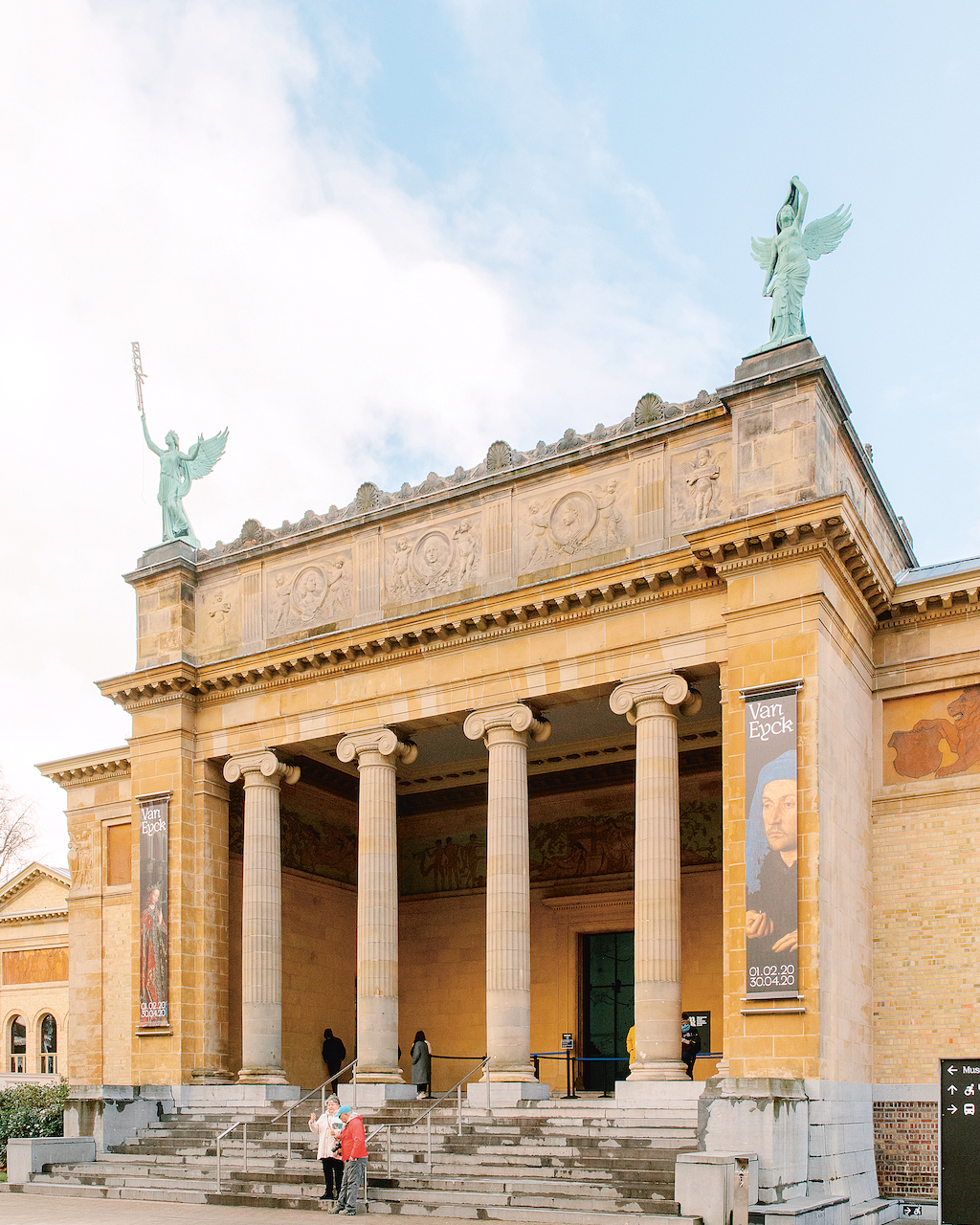
Van Eyck was born in the Belgian town of Maaseik, near Maastricht, around 1390, and died in Bruges in 1441. Court painter to the Duke of Burgundy, Philip the Good, he mainly painted religious works and portraits, capturing the hotbed of commerce and culture that was Burgundian Netherlands – an area covering parts of Belgium, the Netherlands, Luxembourg and northern France, run by a branch of France’s royal House of Valois from 1384 to 1482.
Although his Arnolfini Portrait, on display at London’s National Gallery, is widely recognised, he is less well-known than Flemish Baroque artist Rubens, celebrated for his voluptuous mythological paintings. Yet, as the leading light of the Flemish Primitives, who fused realism and religious expressivity, van Eyck was a legend in his own lifetime. Not only did he sign his works, an exception for the era, a myth even arose that he’d invented oil painting.
His masterwork, the Ghent Altarpiece, is central to his godlike status. Begun by his brother Hubert van Eyck, the work’s scale partly reflects the ambition and deep pockets of Jodocus Vijd, the merchant who commissioned it. But more than that, the undertaking gave van Eyck free rein to showcase his astonishing innovations – not least his experiments reducing the drying times of oil paint, which allowed him to build layers of translucent paint to truly dazzling effect.
“Van Eyck seemed like a comet on the horizon of Western civilisation when he appeared in the 1400s”
In a way, no one has looked at the real painting for 500 years – until now. “In the 16th century, 70% of [the work] was over-painted to improve the colour,” explains head restorer Hélène Dubois, striking a chic figure with her glasses propped on her head. The removal of layers of paint and varnish has revealed its true luminosity – and the lamb’s humanoid eyes, now facing forwards. “There has been such a fuss about the head, and it is intense,” Dubois admits, amused. “The lamb even has a Twitter account saying, ‘I am looking at you and I am judging you. I follow no one.’ It’s odd!”
The altarpiece’s restored external panels were the star draw at the MSK show. In a one-off, they were shown separately, and it’s astounding to see them so close up. Roaming around the rest of the exhibition, I’m hit by van Eyck’s magical use of light, which adds a sense of luxury and life to even the humblest of objects. A master naturalist, van Eyck went so far as to depict the seams of fabrics, or, in Saint Francis of Assisi Receiving the Stigmata, to suggest snow in distant clouds. His magical trompe-l’œil effects are on show through his grisaille paintings of statues that seem more real than the real thing. I do a double take before an altar-piece panel where Adam, with raised foot, seems to step from his frame.
After the exhibition closed, the outer panels were returned to St Bavo’s Cathedral. A new visitor centre will be launching there in Spring 2021, allowing visitors to don a pair of virtual-reality glasses which bring the cathedral and altarpiece to life.
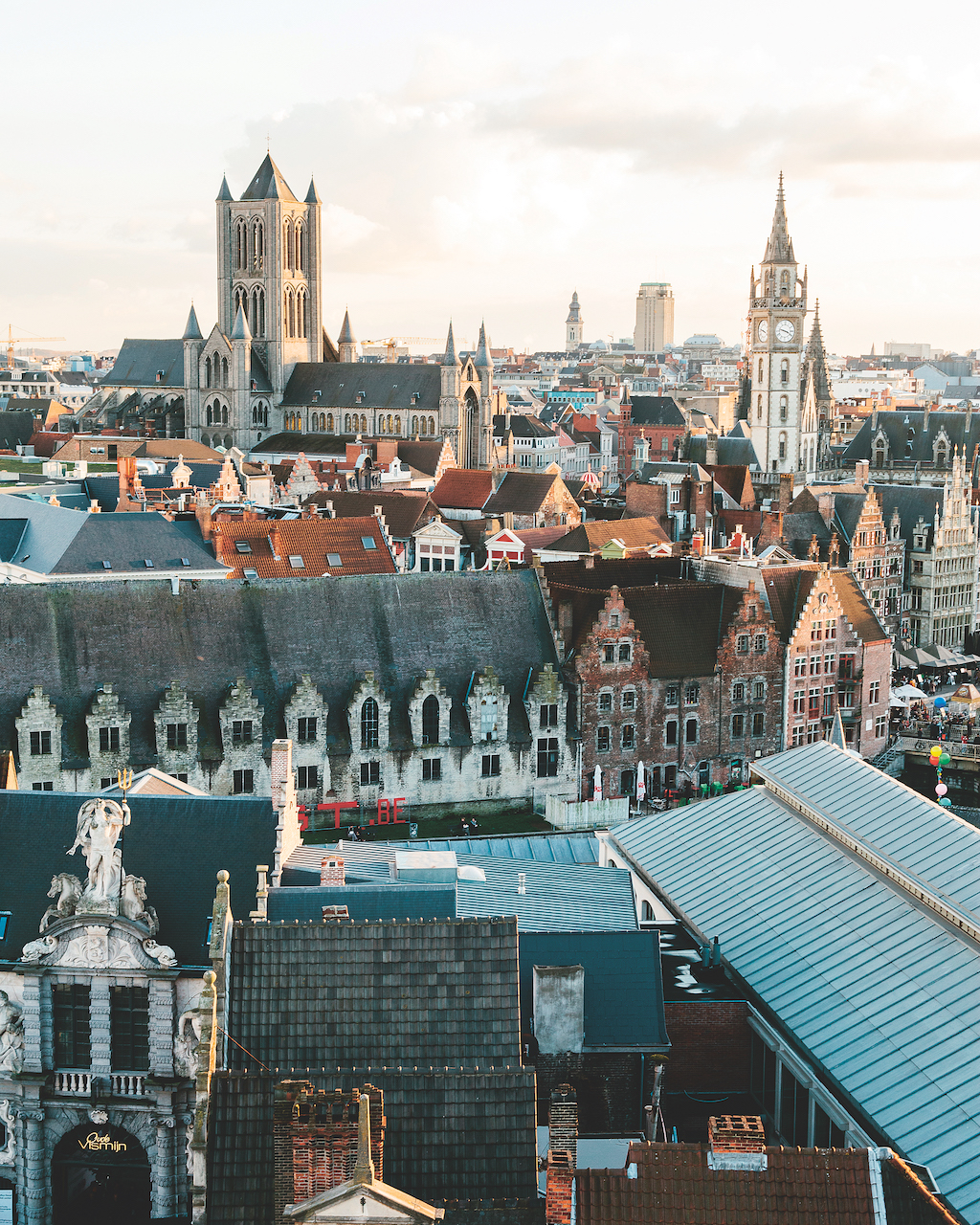
In the meantime, 2020 is Van Eyck Year in Flanders, with special events taking place across northern Belgium. Renowned Estonian classical music composer Arvo Pärt will debut a van Eyck tribute at St Bavo’s Cathedral in September, while British artist Mat Collishaw has drawn the altarpiece into a choreographed dance via robotic arms, on view at Ghent’s St Nicholas Church until November.
Exiting St Nicholas Church in a daze, I’m confronted by the hulking City Pavilion, a cutting-edge open-air structure with a duo of pointed, window-lined roofs that sceptics have memorably dubbed the “sheep pen”. My mission, to discover more about the life and works of the painter, takes me to the neighbouring Belfort, one of three towers dominating central Ghent’s skyline, and whose design shop is the departure point for a Seven Senses Tour mixing food, art and sightseeing, to allow visitors to explore the city through the eyes of van Eyck.
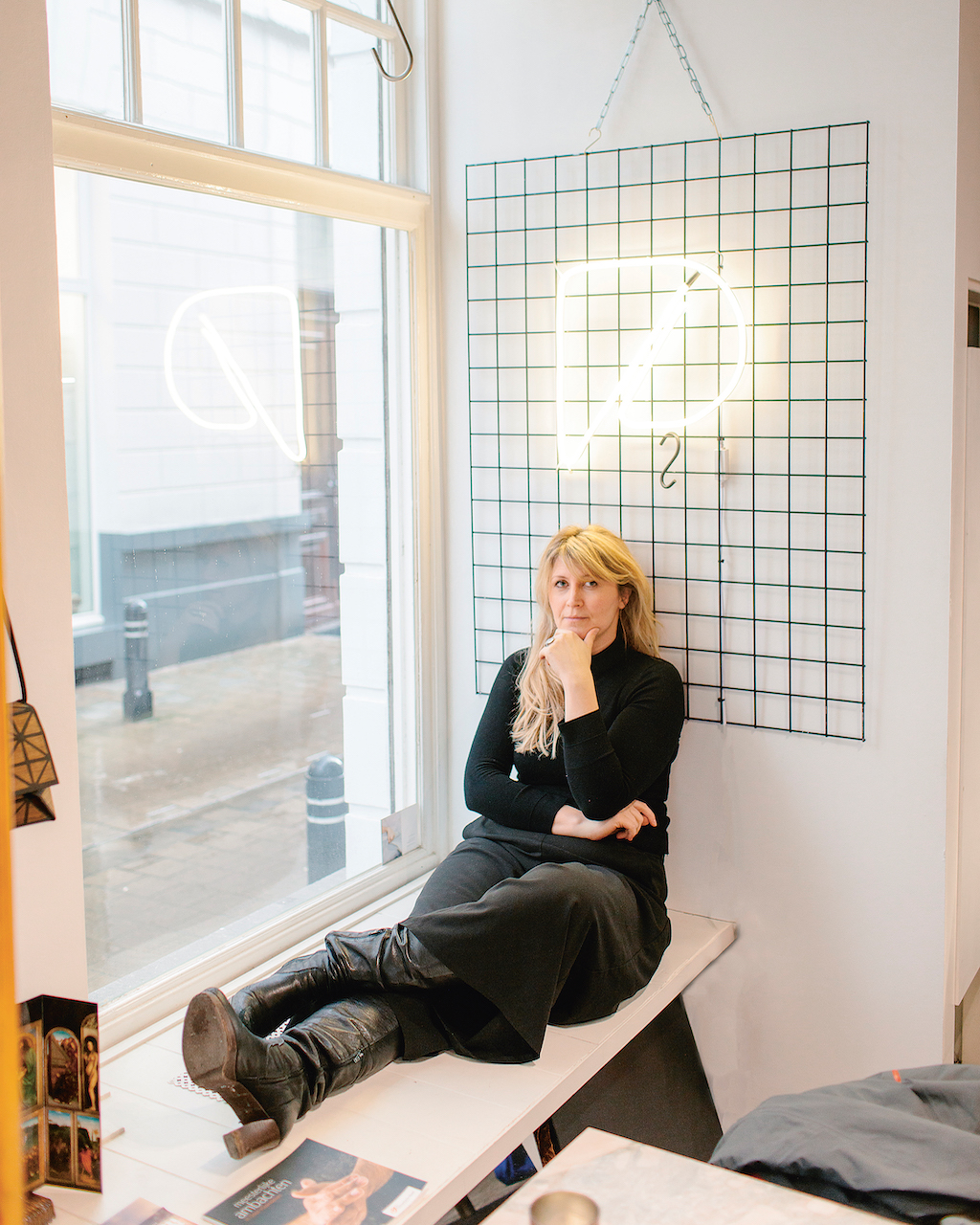
While browsing, I get chatting to 40-year-old designer Pearl De Buck, her black minimalist garb offset by bright-red lipstick. Owner of local shop PAARL, she’s among 70 artisans who’ve made Ghent Altarpiece-themed wares – in her case, a collection of luxury leather bags that are hand-engraved with details from the altarpiece.
“The Mystic Lamb and I go way back,” the proud Gentenaar says. “My father visits Lam Gods (the altarpiece’s Dutch name) every year and tells me about it. He started when he was 15 and is now 70, so calculate how many times that is!” Working on the bags only increased her admiration for the altarpiece. “It’s almost like stepping back into that time, but it stays modern. The vivid colours – the reds and blues – are coming back. It’s trendy in a way,” she says.
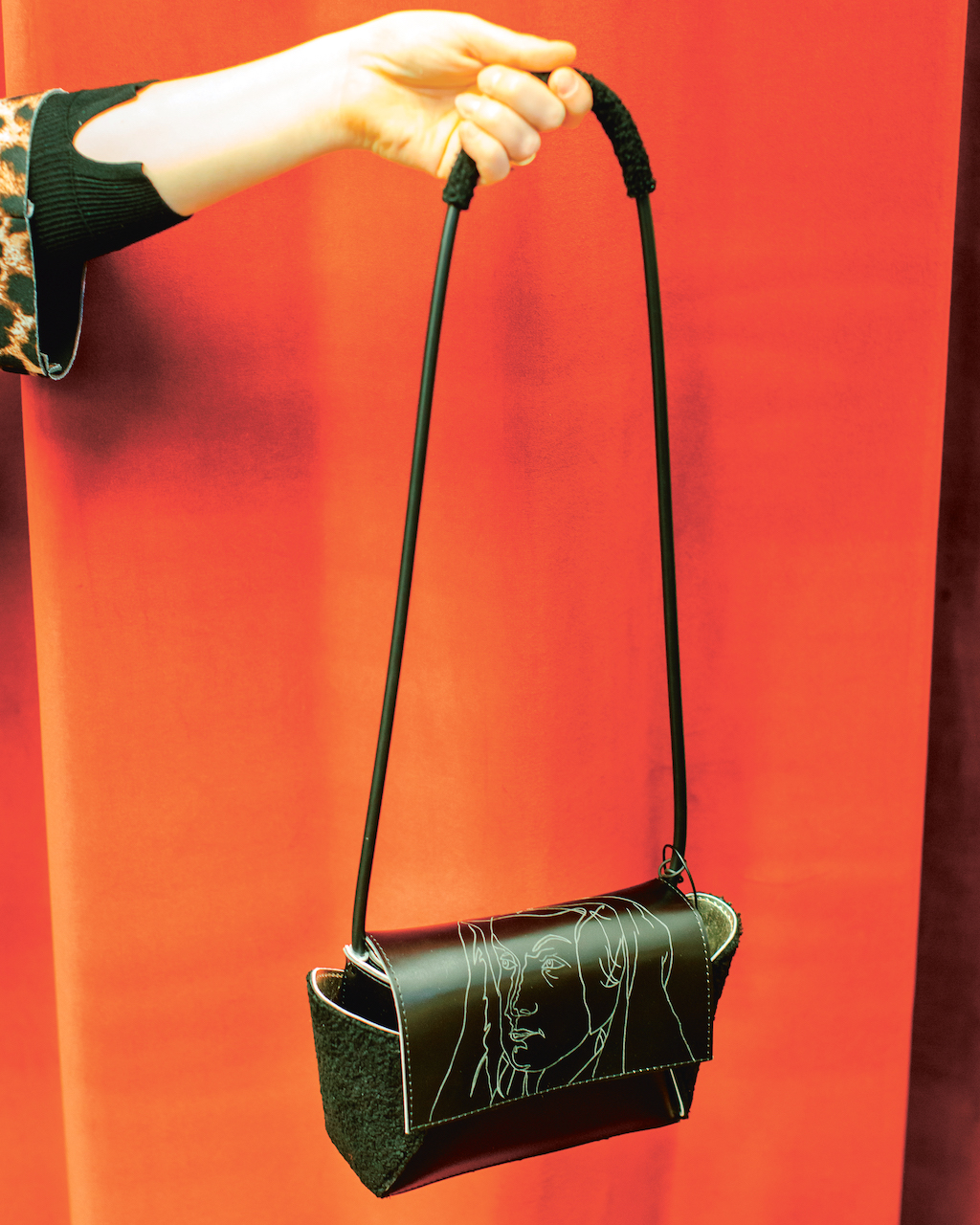
It’s a theme explored at Design Museum Gent, whose current show, “Kleureyck” (until Feb 2021), riffs on the master’s saturated palette, starting with a “pigment walk” through his favourite colour groups. Contemporary designers – including French duo the Bouroullec brothers – have run with the brief, engaging in bold colour experiments across ceramics, product design and glass art.
The result is a blend of ultra-cool aesthetics and science, spanning Nienke Hoogvliet’s research on herbs as textile dyes and a madcap sensory work by Pinaffo Pluvinage + MADD Bordeaux, where visitors are able to make sounds by stroking conductive coloured jellies. Ghent blends edgy art and old architecture in a heady way.
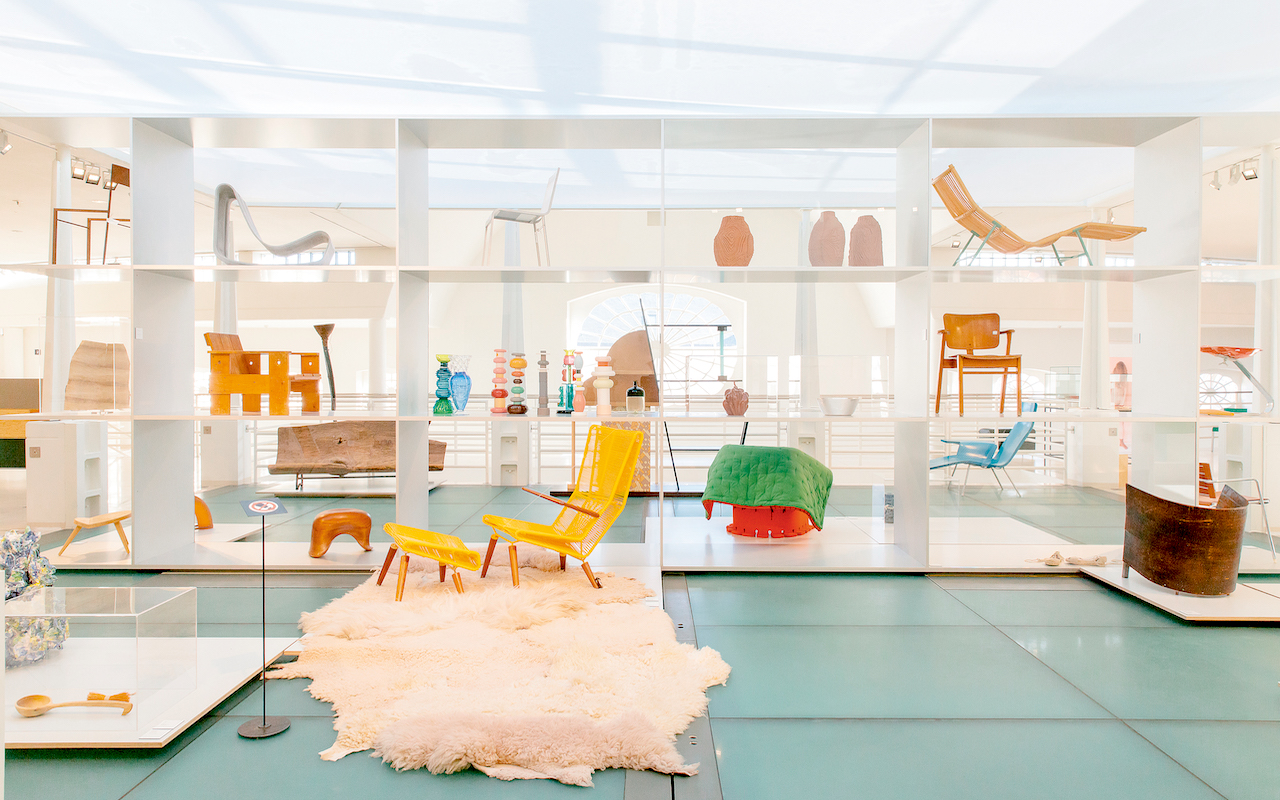
Wandering back outside, I stumble into the Middle Ages – the grand gabled guildhouses of Graslei, the city’s first port, glinting in the afternoon light and reflecting in the river Leie. I take in buildings adorned with coats of arms, cartouches and a golden caravel (a kind of 15th-century ship) and stop off at the inviting café patios, ideal spots to admire the superbly preserved display. It’s a fine reminder of this under-the-radar Flemish city’s former might: buoyed by the trade of cloth and grain, it’s been called a “medieval Manhattan” and was once the second-largest city north of the Alps after Paris.
The Seven Senses Tour includes a jaunt around Ghent’s inland waterways, so I tentatively hop from Graslei’s quayside into a waiting boat, where our loquacious captain gamely juggles local lore and van Eyck asides. The tour takes visitors along the city’s canals, through a tunnel animated by digital projections and to the forbidding (and usually closed) 13th-century Gothic Gerard the Devil’s Castle.
For now, I’m content with a glimpse at another side of Ghent, skimming under a Gustave Eiffel-designed bridge and disembarking at the monolithic Ghent Library to admire a floral mural by street artist Pastel on the back of a house across the water – one of several van Eyck-themed commissions across the city.
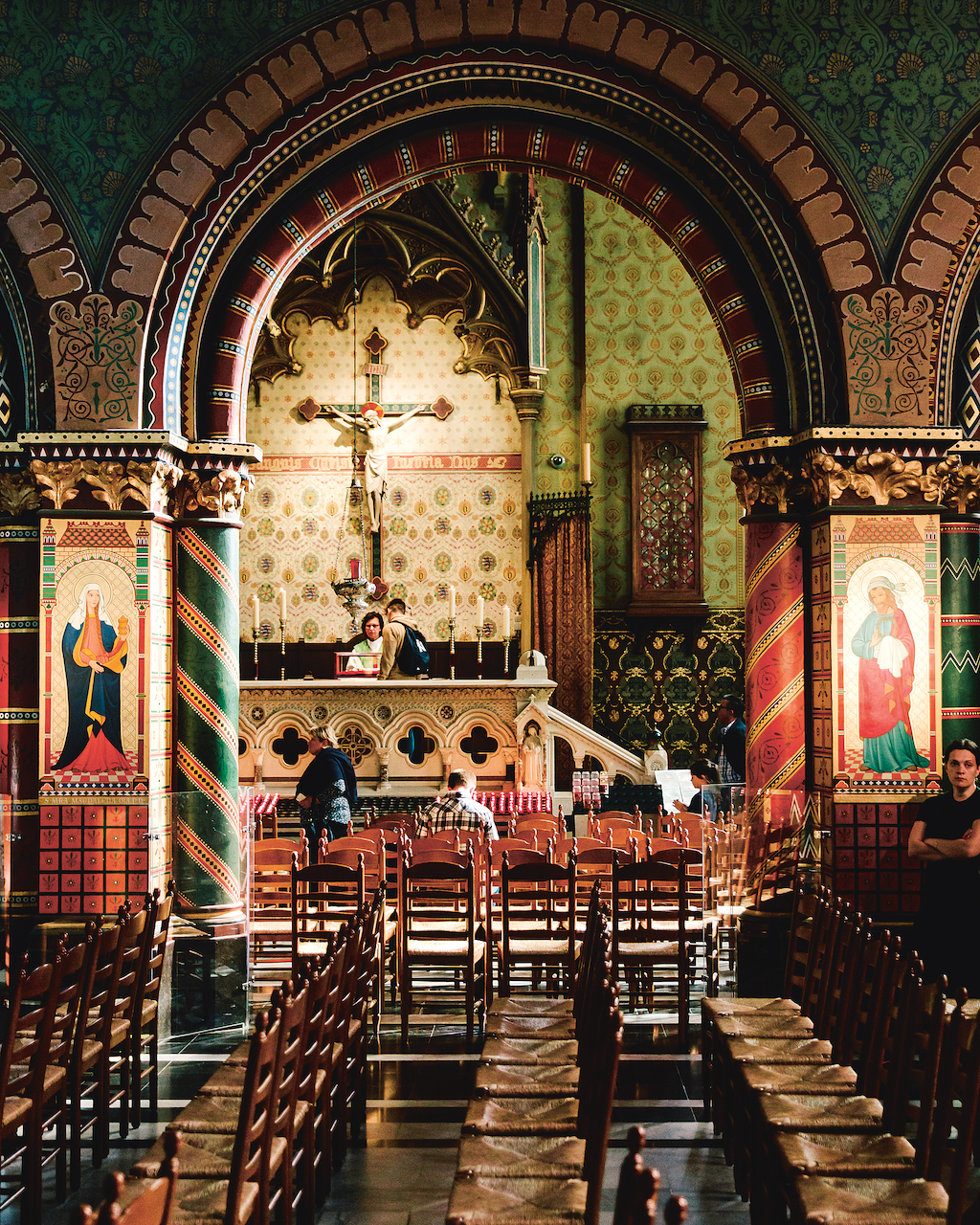
The next day, still on van Eyck’s trail, I make for the city of Bruges, where he spent his last decade, following Philip the Good’s court. One of the joys of Flanders is the proximity of the big cities: after a 20-minute train ride, Ghent’s hustle and bustle gives way to flat polders as we near the coast, and I swiftly find myself among meandering canals, centuries-old bridges and weeping beech trees. A pocket-sized medieval time capsule, Bruges is truly Flanders at its most picturesque.
It was here that van Eyck painted his celebrated works Virgin and Child with Canon van der Paele and Portrait of Margaret van Eyck – perhaps the first time in European art that a painter had depicted his own spouse rather than noble sitters. Both paintings star in a show at the city’s world-class Groeningemuseum until early September, while Sint-Janshospitaal is another must-visit for its trove of works by fellow Flemish Primitive Hans Memling.
“Mind the cobbles, that’s tradition!” chirps Pol Mulier by way of greeting, a tweed flat cap taming the 70-year-old’s white locks. My guide on the Meet & Greet van Eyck walk, he keeps up a steady patter as we head to the majestic Burg square, dominated by Bruges’ most beautiful building: the Gothic City Hall or Stadhuis. Our target is the slightly less glamorous Crowne Plaza Hotel, which holds the excavated remains of the long-vanished St Donatian’s Cathedral where van Eyck was buried.
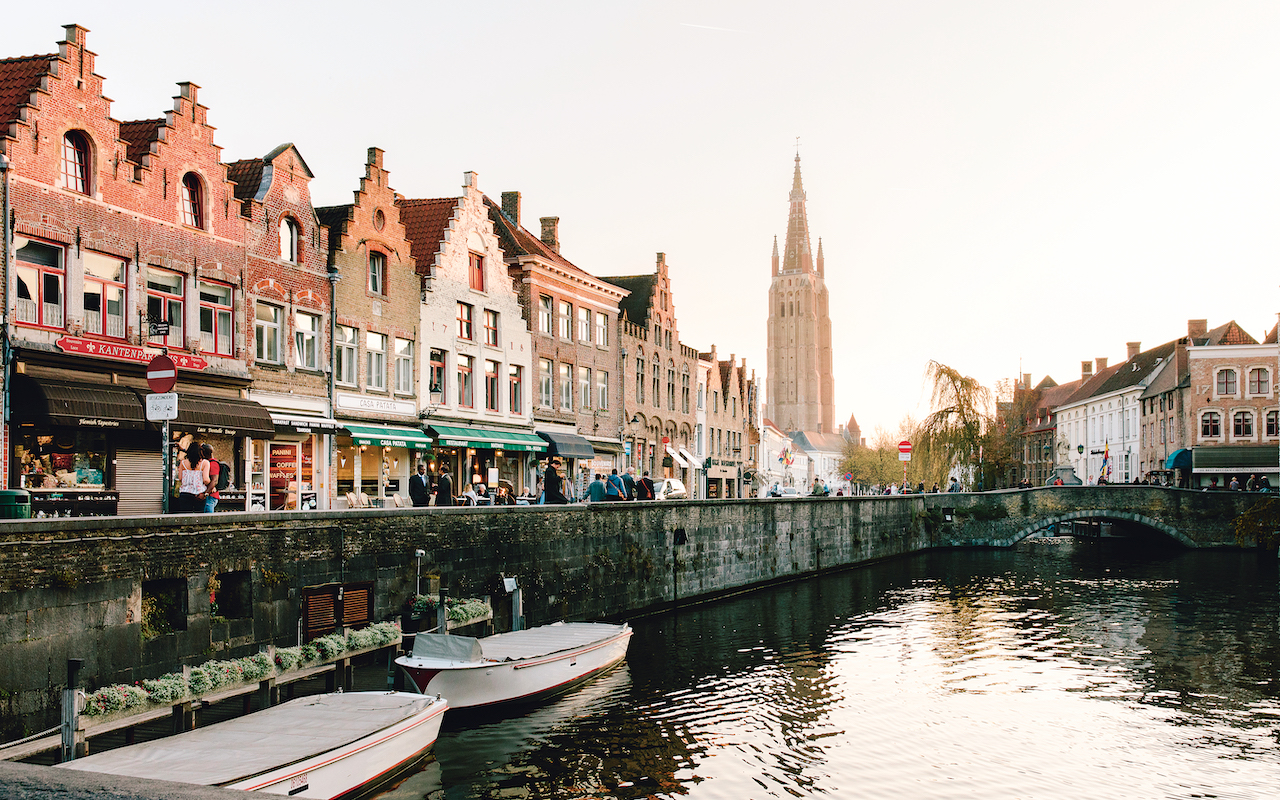
The Markt, or market square, of Bruges, located nearby, represents the city’s beating heart, animated as it is with its horse-drawn carriages, bustling cafés and frietkot stands selling fries. As we arrive, the Belfort’s carillon dutifully tolls the hour, and it’s not hard to imagine van Eyck’s apprentices scuttling off on errands for the ageing master. Back then, the square was home to a covered goods warehouse; today the site houses an immersive museum, the Historium, whose family-oriented exhibits bring that time to life.
As we shelter from the rain in the Historium’s entrance, Mulier pulls out a laminated copy of a painting. “Canon van der Paele is van Eyck’s second-greatest work after the Altarpiece,” he explains. “The canon was from Bruges and commissioned the painting to hang above his mausoleum in St Donatian’s Cathedral. Because of van Eyck’s realism, you can see all the diseases he suffered from. Doctors have discovered six or seven diseases on his face!”
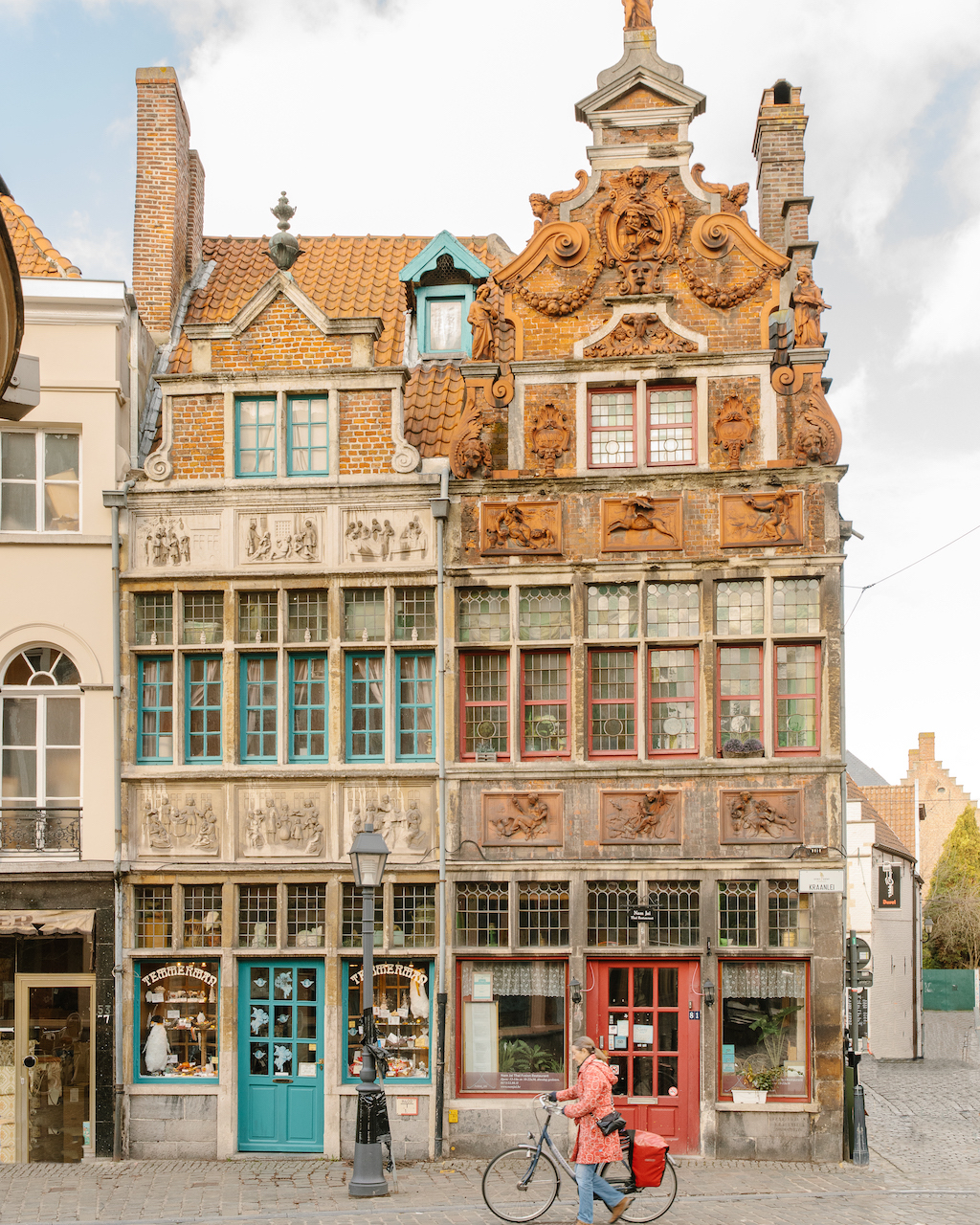
Outside van Eyck’s former residence – now replaced by a brick coach-house of a later date – on narrow Gouden-Handstraat, Mulier dips into van Eyck’s famously sketchy biography. “He lived in Lille for a time, and he worked in Ghent, but he made lots of his final paintings right here. That’s when he wasn’t on foreign missions…” he trails off cryptically, promising to elaborate later.
Passing a debonair statue of the master on nearby Jan van Eyckplein, hub of the mercantile Hansa Quarter, I become aware of secret Burgundian marvels dotting the city’s coiling streets: at one point we nip through a doorway into city palace Hof Bladelin – the only surviving ex-Medici bank outside Italy, its courtyard garden lined by geometric hedges. Landmarks I’ve passed on previous visits, such as the five-star Hotel Dukes’ Palace, grow in grandeur as Mulier reveals their pasts: in 1430, the palace witnessed the wedding festivities of Philip the Good and Isabella of Portugal amid unimaginable pomp.
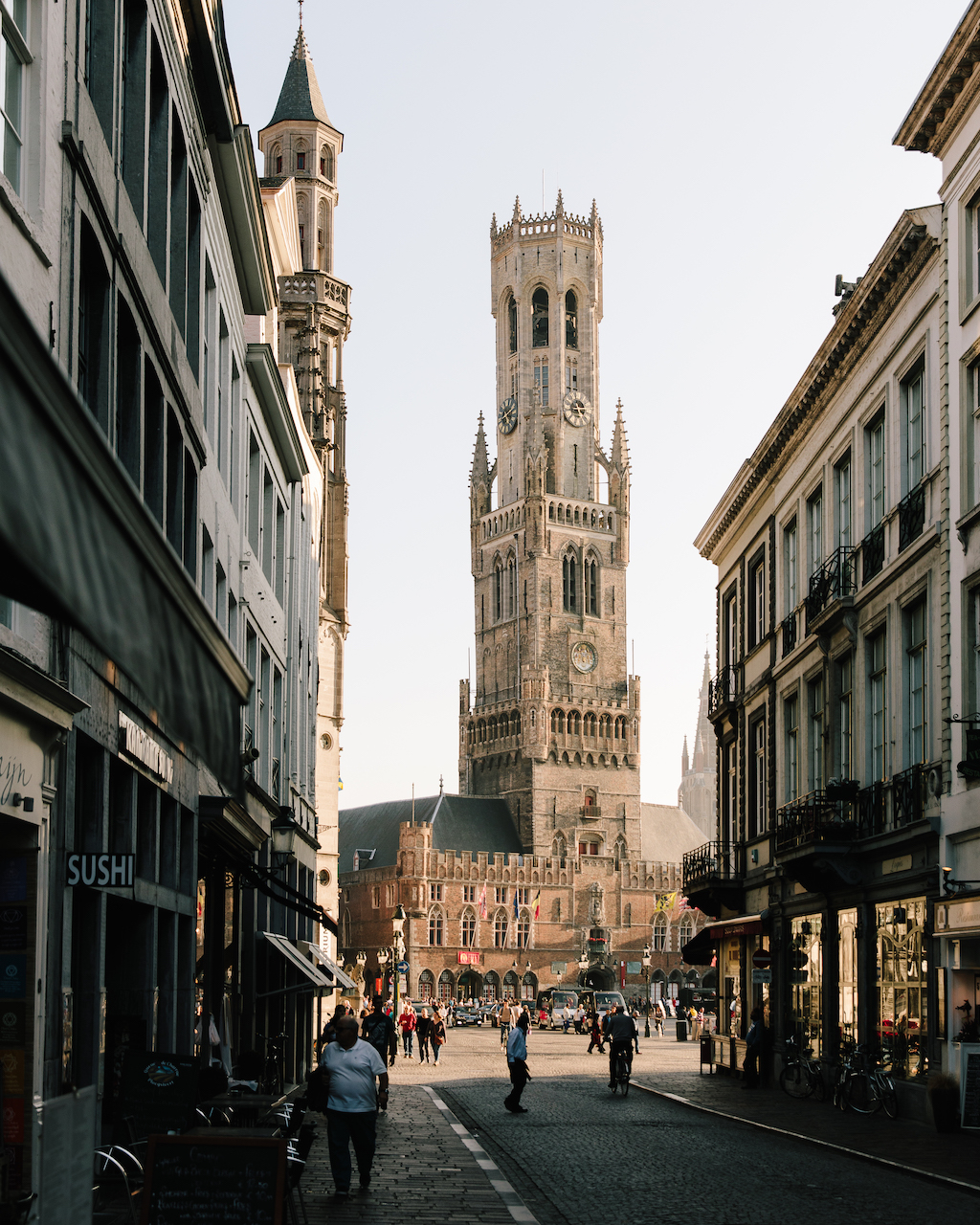
At our last stop, the home of Isabella’s bookkeeper Jan Vasquez, anecdotes are streaming fast. “Before the wedding, van Eyck was sent to the Portuguese court to paint Isabella – no Facebook then,” recounts Mulier drolly. “He sent the portraits to Philip to show how beautiful she was.” On another mission, van Eyck mapped the coasts near Jerusalem for a crusade Philip planned. “He was more than an artist,” summarises Mulier as we part. “He was a diplomat, a cartographer and a spy.”
Two days on, and I finally have a clearer sense of the enigmatic van Eyck: a true Renaissance man who pioneered secular portraits, raised religious luminosity to new heights and even dabbled in some James Bond-style antics. It’s as though, like Dubois, I’ve peeled back the layers of time to let the real subject shine.
And, while van Eyck’s grave has been lost, Mulier’s words have given me the perfect epitaph.
Food for thought: Where to eat
Eating in Ghent once revolved around hefty Flemish staples such as Gentse waterzooi (chicken or fish stew), but over the past decade everything has changed. Not only has Ghent become Europe’s self-styled vegetarian capital, a trio of chefs – aka the Flemish Foodies – led by Kobe Desramaults have also turned it into an ambitious culinary hotspot.
Desramaults runs fashionable pizzeria De Superette and Michelin-starred Chambre Séparée, whose expensive yet sublime fixed-course menus are served in the city’s Belgacom Tower (the venue closes in December 2020). On the flipside, though, democratically priced fine dining is also gaining sway, with the vegetable-led Roots foremost among the movement.
For up-to-date information about events mentioned in the story, please refer to their individual homepages.
To learn more about Singapore Airlines flights, visit singaporeair.com. For more information and travel advisories, please visit Ministry of Foreign Affairs’ website.
SEE ALSO: Stunning virtual museum tours to catch from your couch
This article was originally published in the April 2020 issue of SilverKris magazine
The post An artistic tour in Belgium though Jan van Eyck appeared first on SilverKris.
from SilverKris
No comments:
Post a Comment